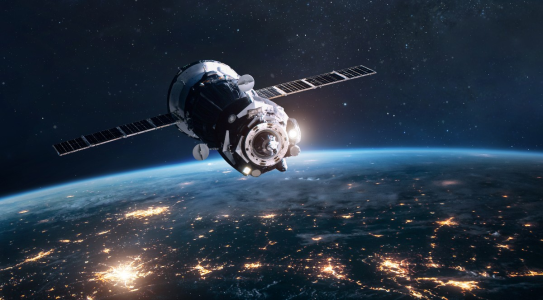Millions set to benefit from a major mobile coverage upgrade—are you one of them?
By
Maan
- Replies 1
Staying connected in Australia’s vast landscape has always been a challenge, especially in remote and regional areas.
While advancements in technology have improved coverage, there are still gaps that leave many without service when they need it most.
Now, a new proposal is set to change the way locals access mobile coverage—potentially transforming connectivity across the country.
Australians were expected to gain the ability to make calls and send texts from anywhere under the open sky by the end of 2027.
The initiative was part of a Labor election pledge aimed at achieving universal outdoor mobile coverage.
Telecommunications companies would be encouraged to collaborate with low-earth orbit (LEO) satellites to improve mobile connectivity.
Providers like Elon Musk’s Starlink would help extend coverage to remote regions and outdoor locations like hiking trails.
The initiative was also intended to enhance emergency communications.
It would allow people to make calls and send texts during natural disasters when terrestrial networks were often compromised.
If re-elected, Labor planned to introduce legislation this year to extend the universal service framework.
Full implementation was targeted for late 2027, barring supply chain or technical setbacks.
The current framework mandated that providers ensure Australians had access to fixed-line phone services and public payphones, regardless of their location.
The Universal Outdoor Mobile Obligation (UOMO) would provide up to 5 million square kilometres of outdoor coverage, including 37,000km of regional roads.
There was also potential for the program to expand beyond 2027 to include data services.
Industry stakeholders, including major telcos and LEO satellite providers, had already been briefed on the proposal.
Final costs were yet to be determined, but the government was expected to offer subsidies on licensing fees and other incentives to speed up deployment and encourage competition.
Communications Minister Michelle Rowland was set to announce the policy on 25 February.
She described the initiative as a ‘vital element’ in Labor’s commitment to making ‘Australia the most connected continent by 2030’.
‘Labor governments have a proven record of expanding universal access to essential services, and the Albanese government is forging another step forward,’ she said.
‘The Universal Outdoor Mobile Obligation will improve public safety, increase resilience during natural disasters, and provide an extra layer of coverage in areas previously thought too difficult or costly to reach.’
‘The experience will be different to land mobile networks, but the benefits transformative, particularly for a large continent such as ours.’
Low-earth orbit satellites are set to play a key role in this major mobile coverage upgrade, but how do they actually work?
Watch the video below to find out everything you need to know.
In a previous story, we covered a major legal decision that could see Telstra compensating thousands of customers.
As mobile coverage plans evolve, questions around consumer rights and service reliability remain crucial.
Read more to find out what the court ruling means for affected customers.

With mobile coverage set to reach even the most remote areas, how do you think this will change the way Australians stay connected? Let us know your thoughts in the comments.
While advancements in technology have improved coverage, there are still gaps that leave many without service when they need it most.
Now, a new proposal is set to change the way locals access mobile coverage—potentially transforming connectivity across the country.
Australians were expected to gain the ability to make calls and send texts from anywhere under the open sky by the end of 2027.
The initiative was part of a Labor election pledge aimed at achieving universal outdoor mobile coverage.
Telecommunications companies would be encouraged to collaborate with low-earth orbit (LEO) satellites to improve mobile connectivity.
Providers like Elon Musk’s Starlink would help extend coverage to remote regions and outdoor locations like hiking trails.
The initiative was also intended to enhance emergency communications.
It would allow people to make calls and send texts during natural disasters when terrestrial networks were often compromised.
If re-elected, Labor planned to introduce legislation this year to extend the universal service framework.
Full implementation was targeted for late 2027, barring supply chain or technical setbacks.
The current framework mandated that providers ensure Australians had access to fixed-line phone services and public payphones, regardless of their location.
The Universal Outdoor Mobile Obligation (UOMO) would provide up to 5 million square kilometres of outdoor coverage, including 37,000km of regional roads.
There was also potential for the program to expand beyond 2027 to include data services.
Industry stakeholders, including major telcos and LEO satellite providers, had already been briefed on the proposal.
Final costs were yet to be determined, but the government was expected to offer subsidies on licensing fees and other incentives to speed up deployment and encourage competition.
Communications Minister Michelle Rowland was set to announce the policy on 25 February.
She described the initiative as a ‘vital element’ in Labor’s commitment to making ‘Australia the most connected continent by 2030’.
‘Labor governments have a proven record of expanding universal access to essential services, and the Albanese government is forging another step forward,’ she said.
‘The Universal Outdoor Mobile Obligation will improve public safety, increase resilience during natural disasters, and provide an extra layer of coverage in areas previously thought too difficult or costly to reach.’
‘The experience will be different to land mobile networks, but the benefits transformative, particularly for a large continent such as ours.’
Low-earth orbit satellites are set to play a key role in this major mobile coverage upgrade, but how do they actually work?
Watch the video below to find out everything you need to know.
In a previous story, we covered a major legal decision that could see Telstra compensating thousands of customers.
As mobile coverage plans evolve, questions around consumer rights and service reliability remain crucial.
Read more to find out what the court ruling means for affected customers.
Key Takeaways
- Labor pledged to achieve universal outdoor mobile coverage by 2027, allowing calls and texts from anywhere under the open sky.
- Telcos would partner with low-earth orbit satellites like Starlink to expand coverage and improve emergency communication.
- If re-elected, Labor planned to introduce legislation this year, with full implementation targeted for late 2027.
- The government aimed to subsidise telcos to speed up the rollout, with potential data service expansion beyond 2027.
With mobile coverage set to reach even the most remote areas, how do you think this will change the way Australians stay connected? Let us know your thoughts in the comments.








